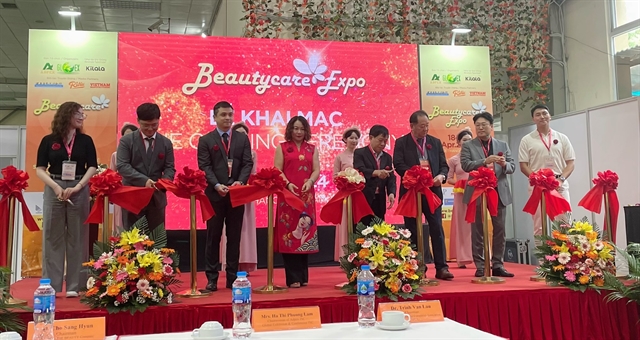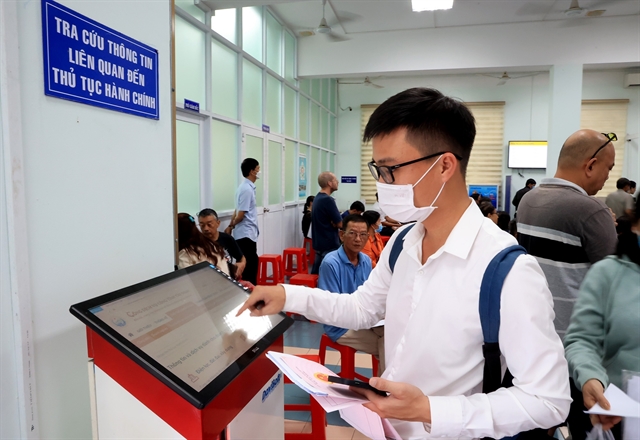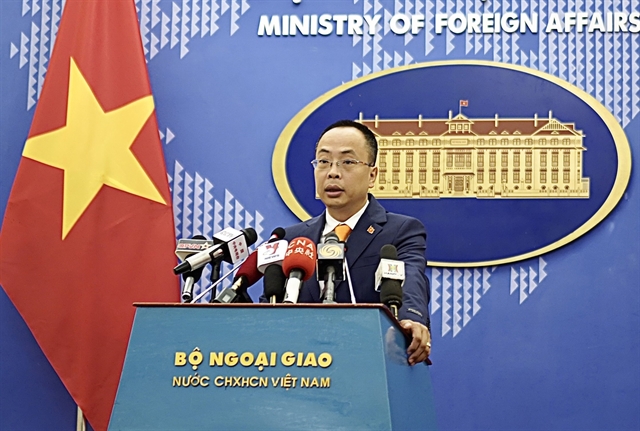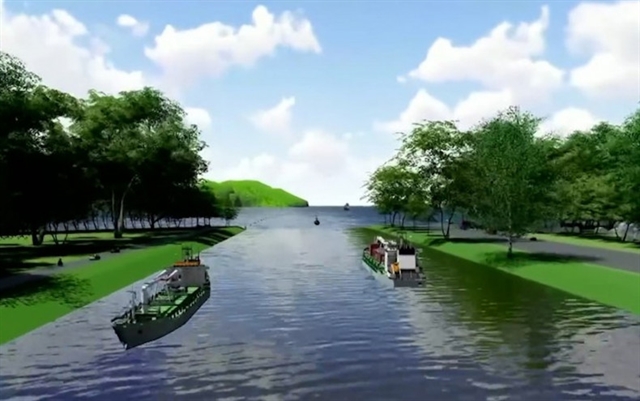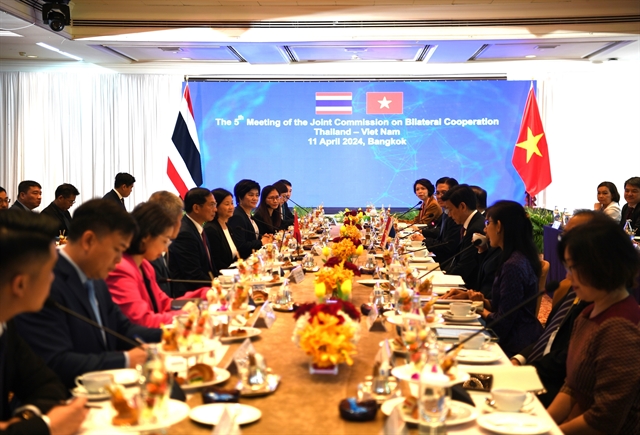 Features
Features

Situated on the road side of the old National Highway 1, the craft village of Phước Kiều in Quảng Nam Province still preserves the 500-year-old bronze cast trade and lives well from their ancestor’s industry.
 |
| Ancient technique: A bronze lion, a product of Phước Kiều village. |
By Hòai Nam
Situated on the road side of the old National Highway 1, the craft village of Phước Kiều in Quảng Nam Province still preserves the 500-year-old bronze cast trade and lives well from their ancestor’s industry.
Bronze products are available at stalls on the road side, and passersby can take a bronze piece home after a quick bargaining session at the Đà Nẵng-Tam Kỳ bus stop.
Visitors can find various types of products, including tiny sculptures, incense holders, Buddha statues and sacred objects from VNĐ100,000 (US$4.4) to millions of Vietnamese đồng each.
Despite rapid urbanisation and the economic crisis, the trade is still the main source of income for over 30 households, as it has nurtured villagers for the past 500 years.
The hand-made industry has changed little from the original production of centuries past, with craftsmen now using mechanical equipment and tools to speed up mass production.
Dương Văn Thắng, 63, is one of the most skilful descendants of the Dương family – the forerunners of the trade – in Phước Kiều Village, after a mass emigration of the northerners to the Champa Kingdom’s ruled land from the 16th century.
Thắng said the trade was founded by ancestor Dương Không Lộ, and the village organises an annual Worshipping Day for the ancestors on the 12th of lunar January.
“I’m the 10th generation of the trade in the development of bronze technique in the region, and my youngest son keeps the trade alive. The trade was seen as a wealthy one in the 1960s, when many Vietnamese families looked for bronze kitchenware and decorations rather than musical instruments,” Thắng recalled.
“Bells, Buddha statues, worshipping objects, pots, basins, and gongs were the most popular products ordered from the village’s bronze casters. In past centuries brass musical instruments and even cannons for military use were the most sought-after items,” he said.
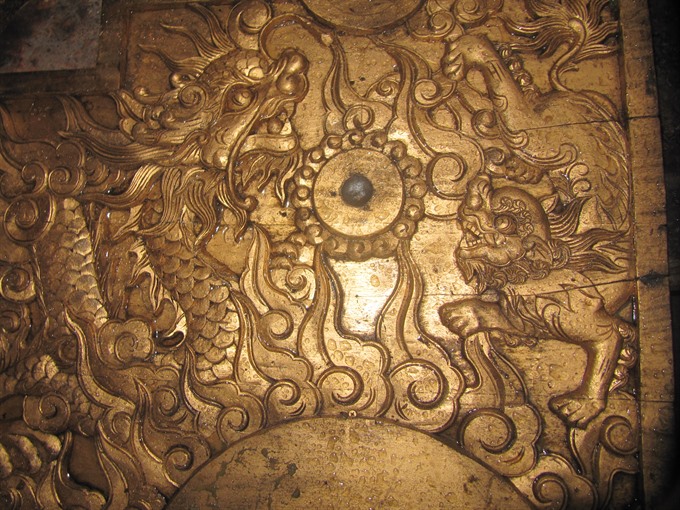 |
| Intricate pattern: A wooden layout of a sculpture is the base for a bronze cast sculpture. |
Thắng said bronze was less used in the 1980s, when aluminum dominated due to its convenience and lightness.
“Bronze was used in making electrical wire, electronic production and machinery parts or material export. The craft became busy again in the late 1990s when relics, pagodas and old sculptures were restored to serve the booming tourism sector,” he recalled.
He said villagers struggled against difficulties to keep the furnaces burning.
“We are ordered to cast gongs for villages in the Central Highlands and restore old pagoda interior decorations with skilful bronze sculptures, and produce souvenirs for resorts and hotels,” Thắng said.
“The village’s craftsman could manufacture any items, ranging from commercial use to machinery spare parts. Our craftsmen show off their technical skills by completing the most complicated orders from customers,” he said.
Clay mold
Traditionally, clay formwork is always the most difficult stage in starting a bronze cast, as craftsmen have to create a suitable layout for an eventual perfect product.
Nguyễn Ngọc Lộc, 64, who has worked for 38 years, said it took great dexterity to create a good mold.
“Craftsmen have dexterous hands, and only the best are selected to join the casting process,” Lộc said, showing his calloused fingers.
“Clay is taken from the Thu Bồn River that runs along our village. Rice husks are used to mix with the clay to keep the molds from cracking when they are in the furnace,” Lộc explained, adding that the ancient technique had been preserved from their ancestor’s know-how.
“Small molds can be burnt using firewood in an out-door stove, but larger casts need a larger foundry with an iron pot. Bronze melts at 3,600 degrees Celsius, but takes 24 hours to cool before it can be trimmed,” Lộc said.
“It’s really a hard job. We form the bronze products with heart and soul, love and creativity,” Lộc said.
“I grew up in the village and started my life with the craft. It has helped raise my family during difficult times, and is still a major income for me,” the craftsman said.
He said new tools help craftsmen reduce processing time for the bronze casts, as they now take only one day to trim and finish a product, rather than the previous five days.
 |
| Pride in his work: Craftsman Dương Văn Thắng shows his bronze cast Buddha statues with a thousand hands and eyes at his shop in Phước Kiều village in Quảng Nam Province. |
Natural dye
Thắng said craftsmen sometimes dye Buddha statues or other products with a dark colour, so lemons and leaves of Garcinia gummi-gutta, or Brindle berry (Garcinia cowa), are used to turn bright brass dark green.
“Chemicals are sometimes used to dye bronze, but village casters prefer the old techniques. It makes our products stand out in comparison to other craft villages,” Thắng explained.
He said now bronze makes up around 70 per cent of the product, to maintain competitive prices and reduce production costs.
Thắng, who established his own bronze company, said the village produces 10,000 items, of which 30 per cent are exported to Asian countries a year, creating a stable monthly income of between VNĐ6 million (US$266) to VNĐ10 million ($444) for craftsmen.
Đinh Ngọc Trai said craftsmen join in all the processes of bronze casting, from mold making, bronze scrap collection, and classification and trimming.
He said over 100 craftsmen in the village are busy with orders from customers all year round.
Trai said the craftsmen took six months to complete big cannons and bells for some resorts in Đà Nẵng and central provinces, and various souvenir items for 30 shops at major tourism sites in the region.
The 44-year-old said the secret ratio of bronze, zinc or silver makes for the good sounds of the gongs and bells.
 |
| Painstaking work: Heads of bronze Buddha statues are cast by craftsmen in Phước Kiều village in Quảng Nam Province. VNS Photos Công Thành |
Dương Ngọc Toàn, 18, who is the youngest son of Thắng, said he fell in love with bronze after he was taught by his father.
“I grew up with the smell of bronze, and my childhood toys were bronze pieces from my father’s workshop. I am preparing for an entrance exam to a technology college, but I will preserve the trade as I have practised for years,” Thắng said.
“Higher education will help me restore the trade for prosperous development, not just for the village’s craftsmen, but for the longer existence of traditional craft.”
Thắng said the village’s craftsmen were called to cast coins and interior decorations for the royal palace under the Nguyễn dynasty (reigning from 1802 to 1945) in Huế.
Challenges
Dương Văn Ca, deputy chairman of the Điện Phương Commune People’s Committee, said poor marketing and brand creation, and the lack of a famous brand has seen local crafts lagging behind and at a disadvantage in both domestic and world markets.
“Worshipping objects including Buddha statues are used by some countries in Asia, but they are too heavy to carry home as souvenirs among European tourists. Statues and ornamental products used in pagoda and ancient buildings occupy 30 per cent of mass production from the village,” Ca said.
“We have been struggling to create connections between travel agencies and different craft villages in the commune,” Ca said.
“Phước Kiều is merely a craft village, but not yet a tourist destination. The village needs a master plan to assert itself as a craft site in connection with carpentry in Kim Bồng Village, mat weaving in Bàn Thạch Village, eco-tour sites of Triêm Tây Village, nipa palm in Cẩm Thanh Village and vegetable gardens of Trà Quế in Hội An city,” Ca said.
He said the village is not so far from the tourism hub of Hội An, and the craft village could emerge as an option for tourists when visiting the ancient town and suburban areas.
Ca said UNESCO’s Hà Nội Office and the International Labour Organisation (ILO) have helped Điện Phương Commune complete a community-based eco-tour site in Triêm Tây Village last year.
He said the bronze products were introduced with the Crafted in Quảng Nam seal – the first ever provincial brand for craft – among the first 34 craft products in Quảng Nam province. Nguyễn Văn Thông, an official from the Quảng Nam provincial department of Industry and Trade said only 34 products out of 100 from 12 production units were recognised with the Crafted in Quảng Nam seal in 2016.
The traditional crafts from 65 villages contributes 30 per cent of the annual provincial industrial production value, but it still faces challenges when approaching regional and world markets.
“Craft villages in the province create over 100 hand-made products, but only 20 are recognised with intellectual property ownership,” Thông said.
“The province, in co-operation with UNESCO and ILO and local businesses, built up a brand of Quảng Nam’s crafts in a programme to develop the trade,” Thông said.
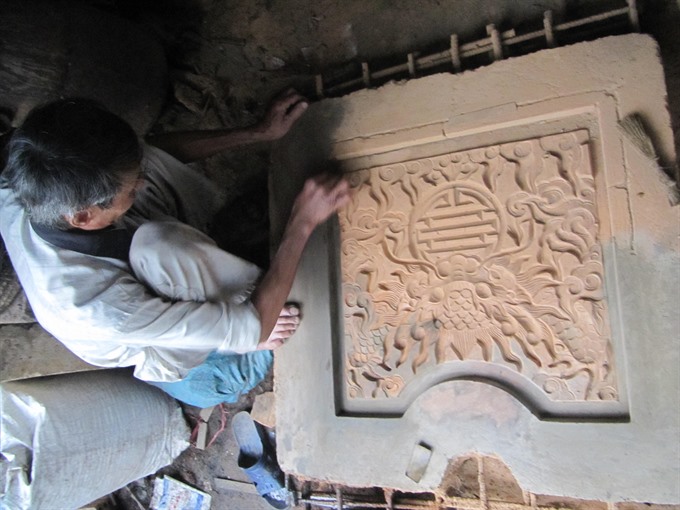 |
| Tradition: Nguyễn Ngọc Lộc, a 64-year-old craftsman in Phước Kiều village makes a clay mold to cast bronze products. |
Chairman of provincial Crafts Association Nguyễn Văn Tiếp said the seal on bronze casts from Phước Kiều was the intellectual property of craftsmen in the province.
“Bronze casts from Phước Kiều will help businesses confirm the brand of hand-made products, while improving the income and quality of life for local people,” Tiếp said.
“The seal will help visitors recognise the village’s crafts amongst thousands of bronze products from other provinces and cities nationwide,” he said.
Võ Bảy, vice chairman of Quảng Nam’s Co-operative Union, said it’s still the first step to confirm the quality and brand of Phước Kiều Village’s craft.
“It means that the village must take care to build their product’s brand under strict regulations and standards,” Bảy said.
Nguyễn Thị Huyền, from ILO, said Quảng Nam was seen as the first location in Việt Nam to build a successful brand for a handicraft product.
Huyền said tourists wished to take home a souvenir from Hội An, Mỹ Sơn sanctuary or Chàm Island, but they were always confused in recognising a Quảng Nam-made product.
She said tourists would not want to take home souvenirs that they could buy at trading centres in big cities.
Thắng, who is a master of bronze craft in Phước Kiều, said it would need a long-term plan to build a strong and impressive brand name for the village’s handicraft business.
“We need support from the government in building vocational training schools for local youth. It will help the village preserve the trade as a precious treasure, but also offer an essential prosperous job for young people in the future,” Thắng said.
He said the trade has been major source of income for generations, and it must be promoted as a lucrative trade amongst booming technology.
The village still preserves an old bell that was cast 400 years ago. The village was the former location of the defunct Thanh Chiêm Palace (built in 1602 by Lord Nguyễn Hoàng) – the cradle of the Vietnamese romanised script. VNS
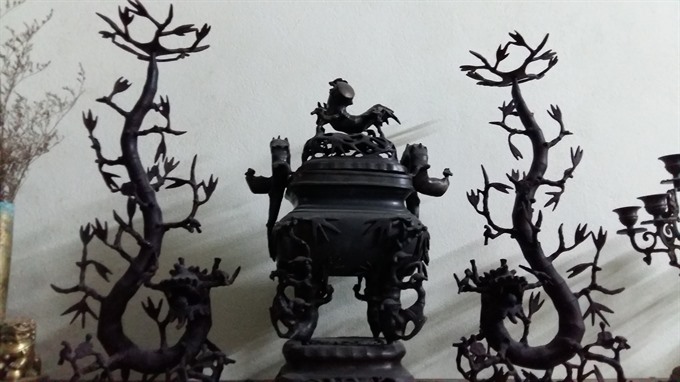 |
| Family shrine: A bronze cast incense burner, often seen at ancestor’s worshipping places at the homes of Vietnamese families. VNS Photo Công Thành |
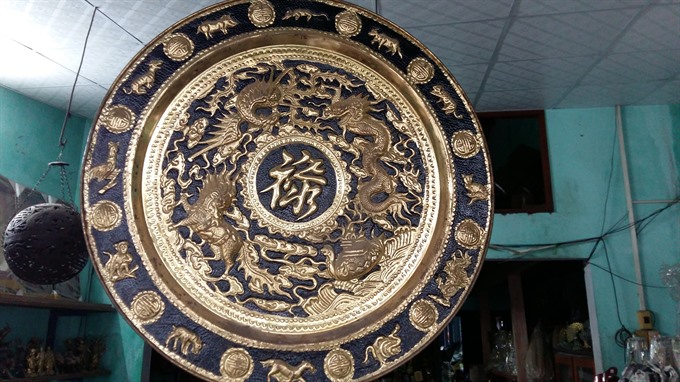 |
| Piece of art: A bronze sculpture is used to decorate a house. |


